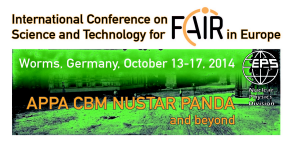Speaker
Ralf Rapp
(U Texas A&M)
Description
Photons and dileptons are pristine probes of the hot and dense medium formed in heavy-ion collisions, since, once produced, they traverse the fireball undistorted. Dilepton invariant-mass spectra are the only known observable which enable a direct access to an in-medium spectral function, in the vector channel. In the vacuum, and at low mass (M<1.5GeV), the vector spectral function is dominated by the rho(770) meson, as a massive and confined excitation of the QCD vacuum. The medium modifications of the vector spectral function are thus related to the changes in the QCD vacuum structure as the phase transition is approached and surpassed. On the other hand, at larger invariant masses (M>1.5GeV), the dilepton emissivity becomes continuum-like and its slope can serve as a thermomenter. We discuss how the temperature and in-medium spectral information can be combined to probe the QCD medium in heavy-ion collisions, how this can be utilized to interpret experimental data, and what this implies for the nature of the QCD phase transition. Effects due to baryons, which will be maximized at CBM, turn out to be of particular importance. We also discuss how the radiation of thermal photons provides complementary information on the medium's emissivity and temperature, requiring a careful consideration of blue-shift effects due to the explosively expanding fireball.
Primary author
Ralf Rapp
(U Texas A&M)

